Writing Analytically - Ch7 PDF

| Title | Writing Analytically - Ch7 |
|---|---|
| Course | English |
| Institution | California State University Fresno |
| Pages | 4 |
| File Size | 78.8 KB |
| File Type | |
| Total Downloads | 46 |
| Total Views | 195 |
Summary
These are the book notes for Chapter 7 of the Fresno State Edition of Writing Analytically....
Description
Writing Analytically: Ch7 - Conversing with Sources: Writing a Researched Paper 1. Use Sources Analytically a. Do not ignore sources b. Converse with sources, they are not answers, but voices c. Sources expand understanding d. Guidelines: i. Locate and highlight what is at stake in your source 1. What is most important? 2. What does it modify or refute? ii. Look for ways to develop, modify, or apply what is said by the source rather than agree or disagree iii. If you challenge a source, represent it fairly 1. Give the source credit and identify what you agree on 2. Discuss what you want to complicate or dispute iv. Look for sources with different perspectives 1. Look for common ground, but different views v. Be a mediator when sources disagree 1. Clarify areas of agreement or disagreement between them 2. “Source Anxiety” and What to do About It a. It can be hard to find a new idea in an ongoing conversation, but it can be done b. Do not ignore sources in order to leave more room for ideas c. Find a middle ground between an entirely new idea and what has already been said d. Form a tentative position then weigh that with what others have said 3. The Conversation Analogy a. Explain quotes to connect the gap between other sources and what you are thinking b. Reject the idea that sources are final and complete answers c. Use sources to build on each other d. Be analytical with your research (these two studies are similar, but they have different purposes/results…) e. Two Methods for Conversing with Sources i. Pick one sentence from your primary source and one from your secondary and reveal what they say about each other ii. Pick one sentence from source A and one from B. How does A speak to B? Vice versa?
f. Local, not global - find small things within instead of focusing on the overall piece 4. Conversing with a Source: A Brief Example (pg 184-185) 5. Ways to Use a SOurce as a Point of Departure a. Make as many points as you can about a single representative passage from the source, then branch out from the center to analyze nd F ocus t o identify what you find most strange in the source b. Use Notice a in order to cultivate curiosity ethod t o identify c. Use The M the most significant organizing contrast in the source in order to find what the source is wrestling with d. Apply ideas in the source to other subjects e. Uncover the assumptions, them build on the point of view and extend implications f. Agree with the majority of the source but find small issues g. Identify a contradiction in the source then explore implications without coming to a solution 6. Six Strategies for Analyzing Sources a. Make Your Sources Speak i. Quote, paraphrase, or summarize to analyze 1. Don’t assume your source to be self evident ii. How has the source led you to a conclusion 1. Avoid putting a generalization and a quote together 2. Fill space between a claim and evidence with your view 3. Example pg 187 b. Attend Carefully to the Language of Your Sources by Quoting or Paraphrasing i. Only quote if the actual language they use is important to your point ii. Analysis almost always benefits if you pay attention to how the information was presented in the source iii. Goals: 1. Quote, paraphrase, or summarize to analyze. Explain how you interpret the source and why it has led you to a certain conclusion 2. You are better off using only a few quotes and digging deep into them than sprinkling quotes everywhere 3. Paraphrasing can help lead you to interpretation iv. Supply Ongoing Analysis of Sources (Don’t Wait ‘Til the End) 1. Think of how people bud in during a conversation
a. It would be weird for me to say everything I believe then go around the circle giving everyone a chance without any communication in between 2. Example pg 189 v. Use Your Sources to Ask Questions, Not Just Provide Answers 1. Avoid to plug in things that are only answers and have no room for exploration 2. Consider the source in other contexts 3. Sources may not answer all questions 4. There may not be a solid right or wrong answer 5. Examples pg 190-191 vi. Put Your Sources into a Conversation with One Another 1. Agreeing and Disagreeing are not the only possible responses 2. Consider many positions on the topic 3. State what you agree with them continue with what you dispute or intend to complicate 4. Examples pg 192-193 vii. Find Your Own Role in the Conversation 1. If you are in strong agreement of a source… a. Apply to another context to expand ar qualify implications (uncover new implications) b. Find other perspectives to broaden your horizons (use sources to gain critical distance) 2. Referee the conversation between 2+ sources 3. Example pg 194 7. Using Sources Analytically: An Example (pg 195-196) 8. Integrating Quotations into Your Paper a. Let readers know you are using the ideas of others even when you are not quoting b. Always attach a quote to some of your own language, DO NOT let it stand alone c. Important Things to Remember i. Acknowledge sources in your text, not only in quotes 1. It is good to introduce sources even if they are in the footnote or parenthesis at the end of the sentence 2. Identify what one sources says from another easily ii. Splice Quotations onto Your Own Words 1. Tag Phrase - “According to So&So...” or So&So states…”
2. Use colon at end of independent clause then list quote after iii. Cite Sources After Quotations 1. Citations are in parenthesis at the end of a sentence iv. Use Ellipses to Shorten Quotations 1. Helpful with long quotes to cut out the things you do not really need. 2. Should only leave out a small amount of text; not too big of a jump 3. Example pg 197-198 v. Use Brackets to Alter or Add Information in a Quote 1. Sometimes words need to be added to contextualize or make sense of a quote 2. Example pg 198 9. Preparing an Abstract a. Non-evaluative summary of a source or even your own paper b. Paragraph 1: identify the sources main points and perspective c. Paragraph 2 (&3 if necessary): discuss the source’s organization and method d. Conclusion: Briefly go over source’s conclusions e. Example pg 199-200 10. What Does Plagiarism Do to the Conversation? a. Poisons the Environment i. Hard on students who do not cheat because some do and get away with it b. Defeats the purpose of going to college i. We go to college to LEARN not only to get good grades 11. Frequently Asked Questions About Plagiarism (pg 201-203) 12. Assignments: Conversing with Sources: Writing the Researched Paper a. Make one Source Speak to Another assage B ased F ocused F reewriting t o Converse b. Use P with Sources c. Use a Source as a Lens on Another Source d. Compose a Research Sequence e. Compose an Informal Perspective f. Conduct a “What is Going on in the Field” Search, and Create a Preliminary Set of Sources g. Write and Abstract of an Article (Or Book Chapter) h. Write a Comparative SUmmary of Two Reviews ...
Similar Free PDFs

Writing Analytically - Ch7
- 4 Pages
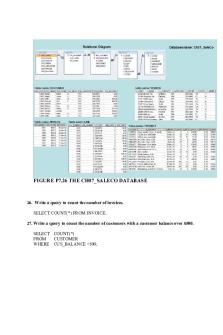
Ch7 - Ch7
- 11 Pages
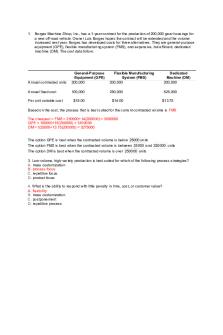
Ch7
- 4 Pages
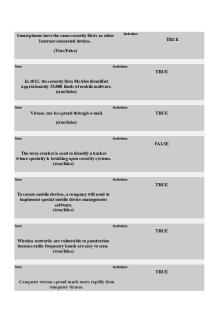
Testbank ch7
- 4 Pages
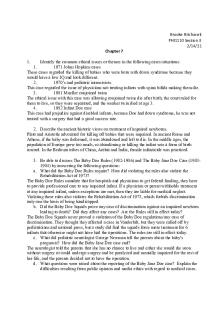
PHI1110 CH7
- 3 Pages
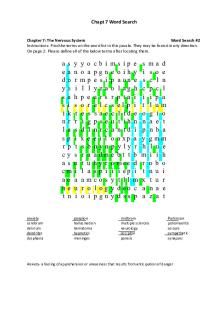
Ch7. Word Search
- 3 Pages

Ch7-practice Questions
- 5 Pages

CH7 review for final
- 2 Pages
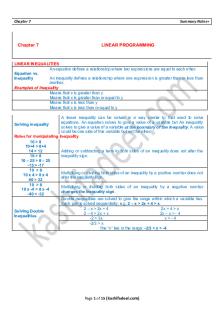
QM-Ch7-Copy - iiiiiiiiiiiiiiiiiiiiii
- 15 Pages
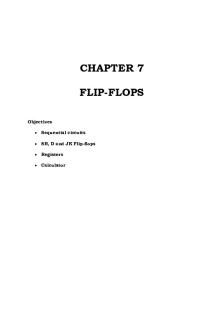
Ch7 - FLIP-FLOPS
- 12 Pages

Chapter 7 - CH7
- 18 Pages

Ch7 - test bank
- 56 Pages
Popular Institutions
- Tinajero National High School - Annex
- Politeknik Caltex Riau
- Yokohama City University
- SGT University
- University of Al-Qadisiyah
- Divine Word College of Vigan
- Techniek College Rotterdam
- Universidade de Santiago
- Universiti Teknologi MARA Cawangan Johor Kampus Pasir Gudang
- Poltekkes Kemenkes Yogyakarta
- Baguio City National High School
- Colegio san marcos
- preparatoria uno
- Centro de Bachillerato Tecnológico Industrial y de Servicios No. 107
- Dalian Maritime University
- Quang Trung Secondary School
- Colegio Tecnológico en Informática
- Corporación Regional de Educación Superior
- Grupo CEDVA
- Dar Al Uloom University
- Centro de Estudios Preuniversitarios de la Universidad Nacional de Ingeniería
- 上智大学
- Aakash International School, Nuna Majara
- San Felipe Neri Catholic School
- Kang Chiao International School - New Taipei City
- Misamis Occidental National High School
- Institución Educativa Escuela Normal Juan Ladrilleros
- Kolehiyo ng Pantukan
- Batanes State College
- Instituto Continental
- Sekolah Menengah Kejuruan Kesehatan Kaltara (Tarakan)
- Colegio de La Inmaculada Concepcion - Cebu



